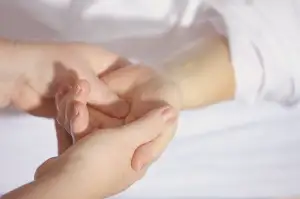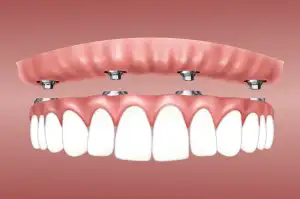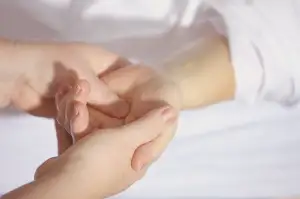Understanding Pica: The Risks and Effects of Eating Corn Starch for Your Health

- Understanding pica and its potential health risks
- The nutritional value of corn starch
- Potential benefits and drawbacks of consuming corn starch
- Tips for managing pica and reducing the desire to eat corn starch
- Healthy alternatives to satisfy cravings for non-food substances
- Seeking professional help for individuals with pica
Corn starch, a common ingredient used in cooking and baking, is typically used as a thickening agent. However, for some individuals, consuming corn starch goes beyond its culinary purposes. This behavior is known as pica, a disorder characterized by the persistent craving and consumption of non-food substances. Corn starch is one of the most commonly reported substances consumed by individuals with pica. Understanding the connection between eating corn starch and pica is crucial in order to address the potential health risks associated with this behavior.
Understanding pica and its potential health risks
Pica is a disorder characterized by the persistent craving and consumption of non-food substances. While it may seem harmless, pica can pose serious health risks. Eating corn starch, a common substance consumed by individuals with pica, can lead to various complications. These include digestive issues like constipation and bowel obstruction, as well as nutrient deficiencies due to the displacement of essential nutrients in the diet. It's important to understand the potential health risks associated with pica and take steps to address this disorder for overall well-being.
The nutritional value of corn starch
Corn starch is a popular ingredient used in cooking and baking, but it is important to understand its nutritional value. While corn starch itself does not provide significant amounts of essential nutrients such as vitamins or minerals, it does serve as a source of energy due to its high carbohydrate content. Carbohydrates are the body's primary source of fuel and can provide quick energy. However, it is important to note that consuming excessive amounts of corn starch can lead to an imbalance in the diet and may contribute to weight gain or other health issues. Therefore, it is crucial to consume corn starch in moderation and ensure a well-rounded diet that includes a variety of nutrient-rich foods.
Potential benefits and drawbacks of consuming corn starch
Consuming corn starch can have both potential benefits and drawbacks. On the positive side, corn starch is a good source of energy and can provide a quick boost when needed. It is also gluten-free, making it suitable for individuals with gluten sensitivities or celiac disease. Additionally, corn starch can be used as a thickening agent in cooking and baking, adding texture to dishes.
However, there are also drawbacks to consider. Corn starch is low in nutrients and lacks essential vitamins and minerals. It is high in carbohydrates and calories, which can contribute to weight gain if consumed in excess. Moreover, excessive consumption of corn starch can lead to digestive issues such as bloating, gas, and constipation.
It is important to consume corn starch in moderation and as part of a balanced diet. Pairing it with nutrient-dense foods like vegetables or lean proteins can help offset its nutritional deficiencies.
Tips for managing pica and reducing the desire to eat corn starch
1. Identify triggers: Pay attention to situations, emotions, or activities that make you crave corn starch. Understanding your triggers can help you find healthier alternatives.
2. Distract yourself: When the urge to eat corn starch arises, distract yourself with a different activity or hobby that keeps your mind occupied.
3. Seek support: Talk to friends, family, or support groups who understand your struggle with pica. Sharing your experiences and receiving encouragement can be helpful in managing cravings.
4. Opt for healthier snacks: Replace the consumption of corn starch with nutritious snacks like fruits, vegetables, nuts, or whole grains. These options provide essential nutrients while satisfying cravings.
5. Stay hydrated: Dehydration can intensify cravings for non-food substances like corn starch. Drink plenty of water throughout the day to keep your body hydrated and reduce the desire to eat these substances.
6. Practice stress management techniques: Stress can exacerbate pica cravings. Engage in relaxation techniques such as deep breathing exercises, meditation, or yoga to manage stress levels effectively.
7. Maintain a balanced diet: Ensure you are consuming a well-balanced diet that includes all essential nutrients. A deficiency in certain vitamins or minerals may contribute to pica cravings.
Remember, managing pica requires patience and perseverance. By implementing these tips and seeking professional guidance if needed, you can reduce the desire for non-food substances like corn starch and promote a healthier lifestyle overall.
Healthy alternatives to satisfy cravings for non-food substances
When it comes to managing cravings for non-food substances like corn starch, it's important to find healthy alternatives that can satisfy those cravings without compromising your health. One option is to opt for foods with similar textures, such as crunchy vegetables or fruits. Carrots, celery sticks, and apple slices can provide a satisfying crunch while also offering essential nutrients. Another alternative is to try chewing sugar-free gum or sucking on sugar-free hard candies, which can help distract from the desire to eat non-food substances. Additionally, engaging in activities that keep your hands busy, such as knitting or painting, can redirect your focus away from the craving. Remember, finding healthier alternatives is key to maintaining a balanced and nutritious approach to eating.
Seeking professional help for individuals with pica
Seeking professional help is crucial for individuals with pica. A healthcare provider, such as a doctor or a registered dietitian, can provide guidance and support in managing this condition. They can conduct a thorough evaluation to determine the underlying causes of pica and develop a personalized treatment plan. In some cases, therapy may be recommended to address any psychological or emotional factors contributing to the behavior. It is important to remember that pica can have serious health consequences, so seeking professional help is essential for the well-being of individuals affected by this disorder.
In conclusion, while it is important to understand the risks and effects of eating corn starch for your health, it is equally crucial to promote a balanced and nutritious approach to eating. Pica, which involves consuming non-food substances, including corn starch, can have serious health consequences. It is essential to seek professional help if you or someone you know is struggling with pica. Additionally, managing pica and reducing the desire to eat corn starch can be achieved through various strategies such as seeking healthier alternatives and adopting a well-rounded diet. By prioritizing a balanced and nutritious approach to eating, we can ensure better overall health and well-being.
Published: 19. 12. 2023
Category: Health



